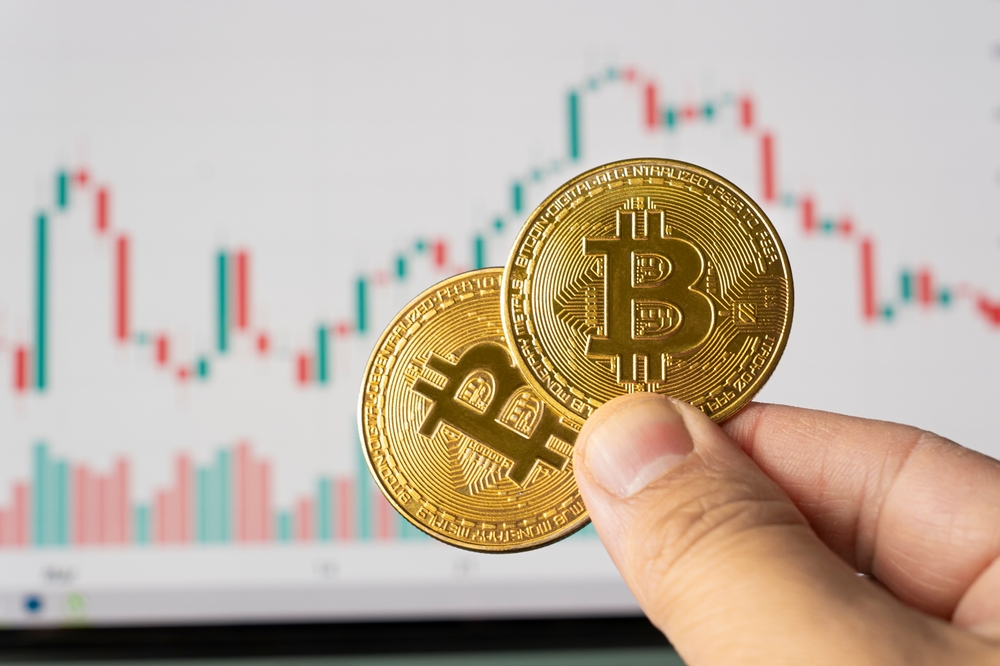At block number 840,000, on the night of April 19, 2024, the fourth Bitcoin (BTC) halving was activated, reducing the reward per mined block from 6.25 BTC to 3.125 BTC.
Each halving reduces the amount of bitcoin that enters circulation, making it a bullish catalyst for its price due to the law of supply and demand. However, despite this, why did bitcoin not rise but rather fall?
The following TradingView graph allows you to observe the price of bitcoin so far in 2024. The vertical yellow line marks the moment of the halving.
For many investors and traders, greed gave way to disappointment. They expected to see a large upward movement for the digital currency as a consequence of the reduction in its issuance. But, unfortunately for them, this was not what happened.
This phenomenon is, apparently, counterintuitive. But, as will be explained below, there is nothing anomalous about it nor should it be worrying.
First of all, it is important to understand the idea of ”buying the rumor and selling the news.” This phenomenon, well known in financial markets, suggests that prices tend to rise in anticipation of an event and fall once it occurs.
In the case of BTC, many investors probably got into the investment before the halving, anticipating an increase in price. When the halving materialized, these same investors could have decided to take profits, leading to a drop in price.
Furthermore, we must not lose sight of the historical behavior of bitcoin. While it is true that previous halvings have been followed by significant increases in the price of BTC, these have not been immediate. Historically, large increases have been observed approximately six months after the event. Therefore, it could be premature to judge the impact of the last halving by the current price of the asset, when not even a month has passed. If history repeats itself, bitcoin could have a big rally by the end of 2024 or the first half of 2025.
Another factor to consider is that, before the halving, BTC had already experienced a significant increase in its price that led it to set new all-time highs. This previous growth may have created the conditions for a bearish correction, which, far from signaling a problem, could be considered a healthy adjustment in the market. This adjustment does not necessarily imply the entry into a new “crypto winter,” but rather a normalization after a period of speculative euphoria.
This information portal had shown that BTC had been at overbought levels for several weeks, which anticipated a very possible correction.
The market, in general, remains optimistic about bitcoin.
Short-term fluctuations aside, the fundamentals supporting a bullish outlook for bitcoin remain intact and robust. Among these, the arrival of ETFs to the US market and, more recently, to the Hong Kong market stands out. These instruments greatly facilitate adoption by institutional investors.
Additionally, technological innovations such as the Ordinals and Runes protocol are expanding the uses of the Bitcoin network beyond financial transactions, enhancing its value as a technological platform.
Finally, we cannot forget the scarcity inherent to bitcoin. As the world’s scarcest financial asset, BTC redefines the concept of digital scarcity. As more people and entities understand and value this unique feature, demand for BTC will likely increase, which could lead to a substantial increase in its price in the long term.
A large number of financial analysts and cryptocurrency traders continue to show optimism. Although it is not ruled out that this correction could extend for a few weeks (or, perhaps, months), it is expected that bitcoin will strongly resume the upward trend it was on.
For example, the investment firm, WidsomTree, believes that it is still early to invest in bitcoin. This company explains that “many institutions are just beginning to allocate or evaluate” investments in bitcoin. Furthermore, there is “a significant portion of global capital that has not yet been deployed in this space.”
It is worth clarifying that, beyond the opinions of specialists, the price of bitcoin is determined by supply and demand in the market. If investors had compelling reasons not to continue buying BTC or to sell it en masse, this would cause its price to stagnate or even fall. Therefore, it is necessary for anyone who exposes themselves to BTC (like any other financial asset) to carry out detailed research, be aware of the latest news in the ecosystem, and take appropriate risk management measures.


